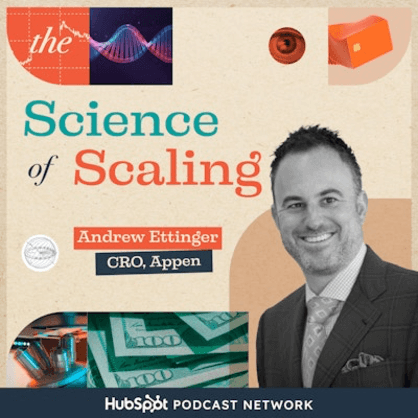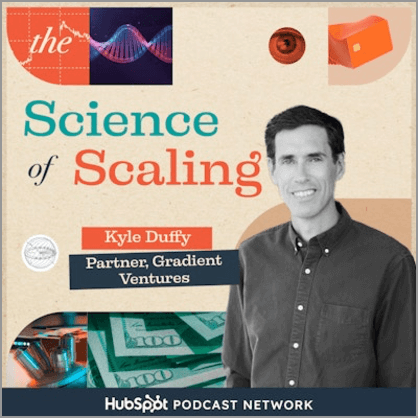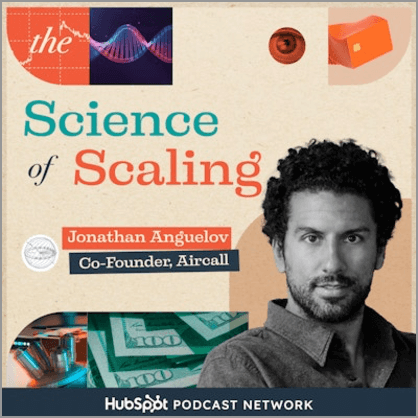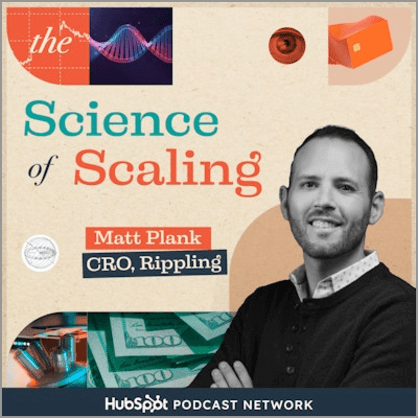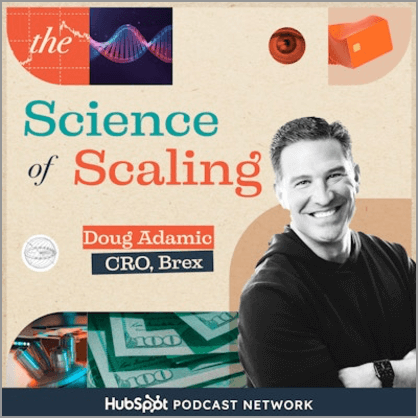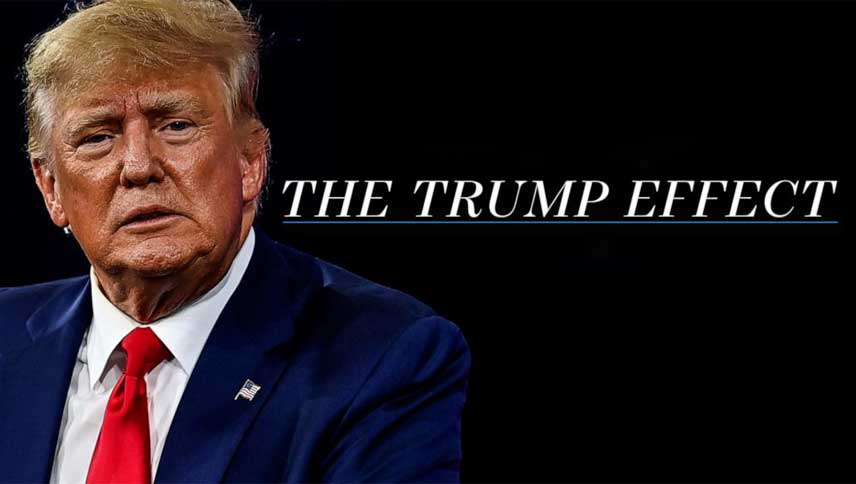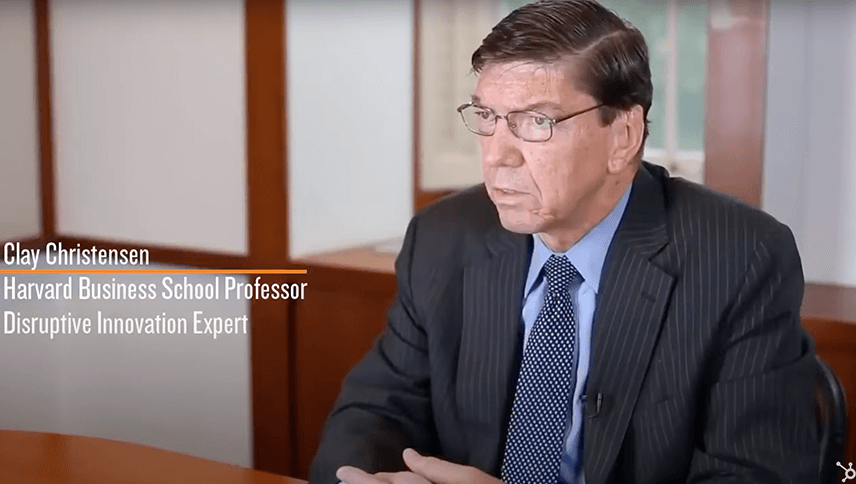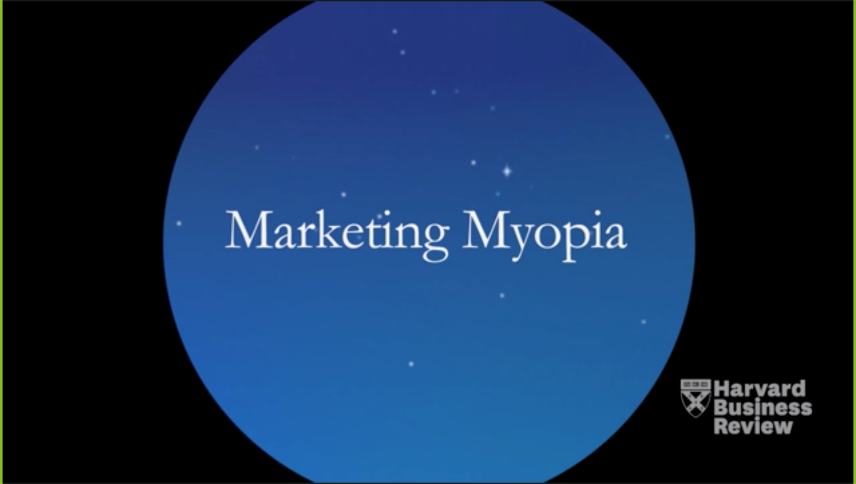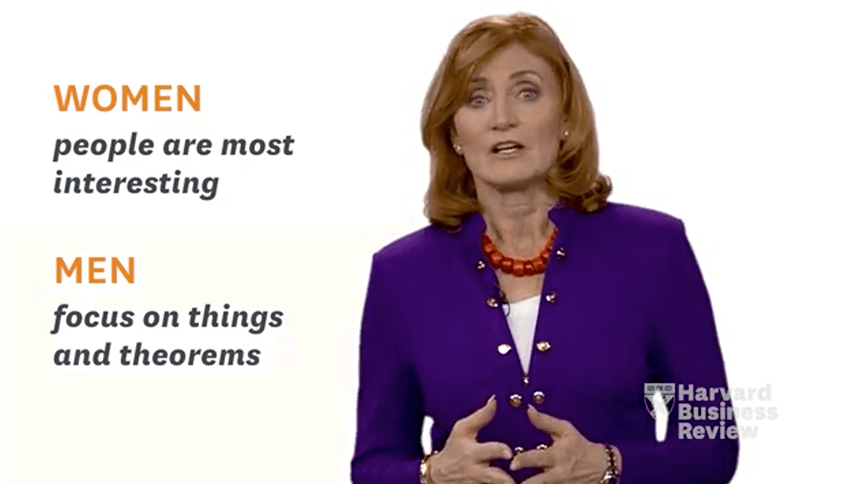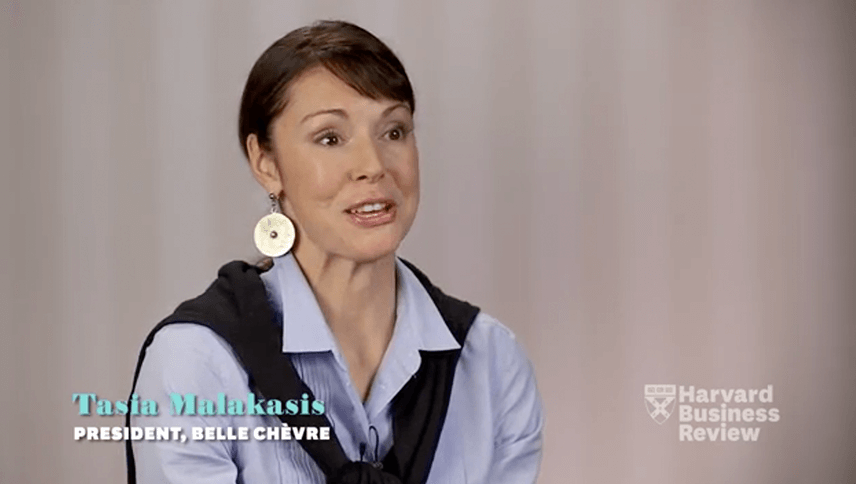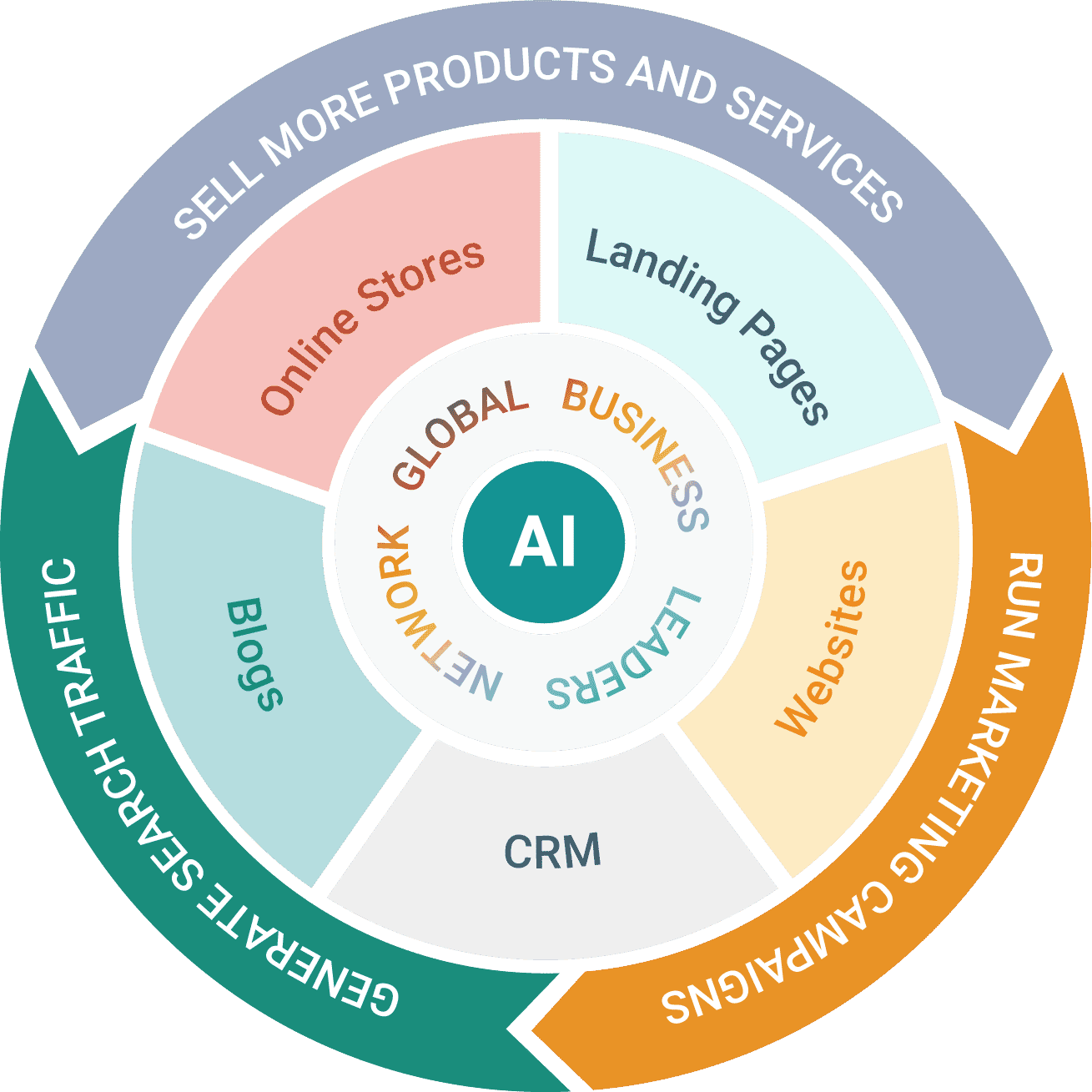How to Align Your Sales and Marketing
Mike Weir CRO, G2
Nov 20, 2023
Mark Roberge: Hey everyone. Welcome to the Scientist Scaling Podcast. I’m your host, Mark Roberge. I am so excited for my guest today, Mike Weir, CRO of G2. Mike’s had a phenomenal career, both in marketing and sales. It is rare. To find a CRO who has actually spent a decade in marketing and then years carrying a quota and running a sales team.
And so who better to dive into the concepts of sales and marketing alignment than a gentleman who’s sat on both sides. In a phenomenal culture, we’re going to talk about the philosophies of that. And as always in these episodes, get very tactical. How do we embed these principles right on the front line, right into the head of the BDR, the head of the demand gen marketer, the head of the account executive.
I’m excited. So with that, let’s get right into it.
Man, what a resume, Mike! Dartmouth and working in the government, then marketer turned salesperson, leading LinkedIn, now CRO at G2! Honestly, the biggest jump on that list for me Is marketer to salesperson?
Mike Weir: How do you get there? Yeah, so ton of stuff I learned through that. And one of them was, man, I wish that I actually had some control over customer relationships and helping shape that day to day conversation, which gave me the itch to say, all right, marketing’s been amazing.
I would love to be a CMO someday. I should probably go sell for a while. I should feel the pressure of carrying that quote. I should see how things connect day to day from, you know, the marketing that I’m doing to actual customer relationships that grow over time. And that was, uh, it was quite the transition because You think you know what sales does until you’re actually in the seat.
And then I realized why they were annoyed with me at times when I was a marketer and you know, sending leads over the fence that were amazing and gold and why aren’t you calling them? Uh, to being like in role and saying like, holy cow, marketing’s throwing too many leads at us. I don’t have the time and bandwidth for us to follow up on all these.
Plus, actually, some of them are kind of crappy. So let’s, uh, let’s have a conversation about it. And then, you know, my time at LinkedIn was phenomenal. Um, learned so much over eight years about how to be a really great sales leader, how to be a great leader overall, um, that, you know, created the opportunity for me to join G2.
Mark Roberge: Hey, everyone. It’s just Mark here. I stopped the recording for a second. The point Mike just made there, it’s rare to see a marketer who’s sold before. That’s rare. You don’t see that a lot. A lot of folks, for whatever reason, yeah, they like to go out and like maybe do a ride along. They like, sit on the floor for a bit, a day, a week, whatever.
Wow! Mike went and carried a bag! Carried a quota for years and built a team and you know, I wish more of us would do that on both sides. I mean, notice some of the things that he highlighted in terms of like, I finally understood that we were throwing a lot of bogus leads over to sales. He is such a better CRO because of that.
And I want to also highlight that, you know, as we progress forward and talk about, you know, one of the biggest impacts he’s had is on sales and market alignment. And of course. If you, as a CEO, as a founder, you’re looking across and like, we need to align these organizations. Who better to hire than someone who sat on both sides?
All right, let’s get back to Mike. So you know, you’ve been in this seat for almost three years now at G2. Looking back, what is the most impactful kind of execution piece that you’re most proud of?
Mike Weir: Yeah, I think at the end of the day, the thing I’m truly most proud of is the sales and marketing alignment that we’ve created in our go to market motion.
We plan, we execute, we track, and we optimize together. At the start of it, you know, coming into G2, I was just astounded at the opportunity. In the 2020 time frame when I joined, you know, we had AEs that were sourcing north of 60% Of their pipeline, like they literally were, you know, one people shows and that is definitely not great.
That leads to like, I’m gonna have to have a fleet of a thousand AEs out there calling customers nonstop and spraying and praying, hoping. And you know, we had 20 percent and 20 percent for BDR and marketing contribution roughly at the time. Today, walking into this year, we’re now looking at a world where.
The marketing and BDR partnership is going to source over 65 percent of our AE pipeline. And so we’ve, in a couple of years, we’ve flipped the whole script on where pipeline where opportunity and how deeply qualify those opportunities are. From an AE centric model to AEs being like empowered to really do what they do well, like represent G2, show the value, help people understand what the best starting point in the relationship as a customer with us is getting a ton of the demand coming from marketing and sales.
And so that’s, that’s been huge. And likewise, our customers are happier, right? They’re actually getting their needs met faster. We’re going from a world where. We had a week lag time to get back to MQLs to now in most instances for highly qualified MQLs. It’s within the same business day that we’re getting back to you, you know, we’re at under 10 minutes on average to engage with somebody in chat today, and we’re on our way to being sub three minutes very soon and trying to get as real time and using automation as possible because we’re seeing our conversion rates to you.
A meeting to an opportunity skyrocketing based on how quickly and effectively we’re engaging with folks showing interest.
Mark Roberge: That’s
Mike Weir: a
Mark Roberge: amazing story. We have to unpack that. Let’s frame the opportunity first. I thought it was interesting that you walked in and you’re like, okay, 60 percent of our pipeline and our deals are self sourced by the AE, 20 percent by the BDRs, 20 percent generated by marketing.
How did you know there was, that was not right? Is there, is there just a particular percentage you’re targeting? Does it depend on context? Can you talk about that?
Mike Weir: Yeah. To me, the foundational part was rooted in the economics of the business and helping our talent do what they are intended to do. Okay.
And on both of those measures, 60 plus percent felt way off because the economics of it said, Hey, the, the highest price resource in this group is going to be the only way that I continue to help expand. Our customer base over time. And so just the pure economics of like, geez, I look at how much budget we have planned for the next couple of years.
Like all I’m going to be doing, we’re not going to be able to invest in product enough. We’re not going to be able to invest in our brand enough. We’re not going to be able to invest in our customers. Enough if all I can do with any new incremental dollar is just hire more AEs. So the economics became very obvious of like, I need to help them be more efficient and be focused.
Because at the same time, AEs, you know, you’re going to burn out if you’re just non stop pounding the phones trying to find somebody that’s willing to have a conversation. Wants to get a demo and then eventually becomes pipeline that you then try to get to closing to hit your targets and, you know, be happy.
Um, so it’s like, how do I help them get farther into that process? How do I help them be more efficient and really focus on what they want to do, which is, I want to really engage with prospective customers to show them the value of G2, to answer their questions, to position what they can invest in and the type of return they can get.
Mark Roberge: What he just said there, I just want to like abstract that out because I find that to be so critical. He’s talking about measuring the efficiency of these different channels in this case, right? He’s talking about. He’s talking about AESourceDemand, he’s talking about BDRSourceDemand, and he’s talking about MarketingSourceDemand.
And in most cases, we see the MarketingSourceDemand most efficient. Uh, he didn’t talk about that here, I’m not sure if he can, but I would guess that’s what he has. However, it’s, uh, It’s the most difficult to scale potentially. Like we can conceptualize doubling the size of the SDR team and hopefully maintain their appointment volume.
It’s much harder to double the size of the marketing budget and double the number of leads of the same quality. It’s almost next to impossible. But, to capstone his point here is, it’s so important for us to take a stab at measuring the unit economics, let’s just say payback period, by each channel. What is the unit economics of AE sourced pipeline, of marketing sourced pipeline, of SDR sourced pipeline?
And, as we look ahead to a quarter or a year in planning and investment. We can pretty accurately project how those dollars are going to yield revenue based on that analysis, right? Let’s get back to Mike.
Mike Weir: So economics definitely weren’t going to work and then talent wise they were also getting frustrated.
They were getting, you know, annoyed with having to do stuff. They’re like, hey, I’ve been doing this for Years now, I want to, I want to go deeper. I want to build more relationships. I want to learn new things. But if you’re sourcing that much pipeline, you don’t have time to do those other more strategic things that you could be.
And so I think both of those things played into the decision that it was like, very obvious. We have to evolve how we go to market and we need help. Let’s talk about the
Mark Roberge: economics though, Mike, just to challenge the point for a second. Cause you were doing, I don’t know, maybe you weren’t doing fine. It’s just kind of like, here’s a salesperson, 60 percent of the opportunities they source, 40 percent comes from BDRs and marketers.
Did the math just not work? Cause I, I can just double that team and double that math. And.
Mike Weir: Yeah, so if you think about it from, from a, a, a private company, when we’re talking with our board, they’re saying, they’re always saying, how could you go faster? How could you grow more? So even when it’s successful, it’s like, Oh, geez, there’s so much opportunity.
If you were more efficient, you could get 20 percent more than the great stuff you’re already doing. But eventually the dollars run out because you just keep going more and more into debt. You get into, you. Deeper negative cash flow and you know, you got to keep your ratios balance. And so that’s where we looked at it and said, okay, let me let me understand one talent aside where we know this is the right thing to help keep amazing people and recruit amazing people.
If I can look at this and say, I actually can get, you know, four and a half dollars back per dollar I invest in revenue marketing, whereas I’m getting two and a half dollars back per every dollar I invest in incremental AE that is sourcing all of their pipeline themselves. Then I can start changing the equation and say, Hey, actually, I can go from a world where my AEs are closing 20 deals a year, I can actually get them to 30, 35, 40 deals a year, because they’re not sourcing all their pipeline, and I can basically spend the same amount And deliver a better business outcome.
And at that point, when I started looking at the blended average, I was like, Alright, I’m, I’m now not getting two and a half dollar return. At a blended average, I’m getting, you know, more like a three and a half dollar return. That even bolsters the case more to part of your point. To go to the board and say, Hey, I’ve increased the efficiency of my dollar return.
I just need a couple more dollars and we can go faster. Because we have so much white space.
Advertise: Talking Too Loud, hosted by Chris Savage, is brought to you by the HubSpot Podcast Network, the audio destination for business professionals. On this podcast, Chris Savage, Wistia CEO and Loudest Talker, takes you inside the minds of entrepreneurs as they share the hilarious, informative, and most challenging aspects of building more human brands.
You can hear episodes like Building a Reusable Notebook Empire with entrepreneur Joe LeMay or The AI Video Revolution with Wistia’s own head of production, Chris Levine. Listen to Talking 2 Loud wherever you get your podcasts.
Mark Roberge: Okay, so let’s talk tactics now. So looking back, what’s Mike’s tactical playbook
Mike Weir: of how you made this happen? Yeah. Yeah. In some of the conversations that, that we’ve had before, I think you got to start at the basics. It’s like literally who you’re trying to sell to. And the common definition there is like, what’s the ICP?
Who is your ideal customer profile? And that is the starting point for us, right? If you’re thinking about what’s good, what’s bad in an ICP. Bad is for us to, you know, say like, Hey, software companies and marketing, that’s our ICP. Uh, I think everybody’s going to get to different assumptions when they get to execution about, Okay, great.
We have over 95, 000 companies that fall into software. Where do we start marketing’s really big, especially as you get an enterprise. So it’s much better is where we evolved to saying, Hey, what are the specific categories within software that we are prioritizing first? Through, you know, based on our taxonomy, we have over 2100 categories.
We track. So like what’s category one through category 2100 in where we should focus our time and energy because we can create great value. Now let’s unpack it and understand at a package level of what we can sell. And what we can support customers with. Now let’s connect the dots, not from like marketing to saying, okay, for essential, which is about building your presence on G2, generating your review base, creating social proof for yourself.
Like that’s the customer marketing. That’s product marketing, who really cares a ton about that. And so we took it a layer deeper and said, it’s not just marketing. It’s for essential. We need to really hone our story and show value for customer marketers and product marketers. For buyer intent, It’s demand gen marketers.
It’s media buyers. It’s the folks that are activating campaigns to generate, you know, leads and signals for their business.
Mark Roberge: I kind of feel like where this issue comes from is it actually starts with the sentiment of the investors, which translates to the sentiment of the founders, because a lot of us listening are part of venture backed companies.
We are trying to pursue venture oriented returns, billion dollar companies. We have to prove to folks that we have a billion dollar market. But that doesn’t mean that we have to prove that this quarter or this year. Too many of our companies are trying to blow the ocean. And really what we want to think about is not how do we make this year’s number by selling to everybody.
But instead, what is the easiest path to get from 10 million to 20 or 20 to 40 this year based on the market and the value props that we’ve come up with? I think Mike’s done a just a phenomenal job of showing us and paving the way on how we can be more specific at de risking. The ICP here I let’s get back
Mike Weir: and hear more from
Mark Roberge: Mike
Mike Weir: so getting to that you know deeper level of planning helped us align and make sure that our tactical plans when it came to your marketing who you gonna target with what messages when that we have the alignment versus just like a.
Hey, target software companies and anybody in marketing is fine. How’d you do that? I mean, if we’re sitting
Mark Roberge: here on listening and it’s like, okay, yeah, I get it. Like we’re probably a little too broad and saying that we sell to HR in us based, you know, finance companies, whatever. We should get a little more specific.
How’d y’all make that decision? Was it just like, hey, product, go in a room and tell us the answer? Not too far. Okay. Actually, not too far from that. But like, it’s got to be deeper than that. So can you speak to how, once we make this decision, how do you architect it and hold the frontline accountable to reinforce
Mike Weir: the strategy there?
Yeah. One of the things is just continuing the discussion based on What’s the closed one and closed loss data that you have when you look at and when you talk to the individuals that help close those opportunities, you know, we’re starting to see like, oh, wow, like this is a whole different title. Right?
Like, you know, hypothetically, it’s like, oh man, the social media team is getting really involved all of a sudden with the G2 stuff is showing a lot more interest. They, they want to be a part of building their brand on G2. So they’re now starting to show up a ton in buying the essential package, in managing profile, in managing the activation of some of that data.
It’s like, so really having that ongoing conversation about what are you winning? What are you losing and why? Okay. Gets us insights of how is the persona evolving, but it also gives my team great coaching feedback where we’re seeing, Oh, we, we closed, lost a buyer intent opportunity. Then you dig into it and you’re like, wait, you were talking to a customer marketer.
Like why does the customer marketer care about buyer intent? Are they actually running media campaigns? Are they running any outreach programs, like email, other things? It’s like, oh, no, they’re, they’re more about, you know, presence, competitive intelligence, things of that nature. It’s like, well, then buyer intent’s really not the right fit for them.
Like, we should be talking about their presence on G2, their review base on G2. And so, some of this becomes coaching where it’s like, hey, you, you actually weren’t talking to the right persona for that specific package. And we go back, find the right contacts, have the right conversations. In many instances, it can revive a lost deal because we just weren’t talking to the right people and in some cases it helps us just keep evolving our definition of who we should be caring about and the type of messaging and value we need to be showing to them.
Mark Roberge: You’re operating on a level that we don’t see that often. I’m sure there’s a lot of listeners who’s like, Dude, I barely have accurate close loss data. Like, nevermind the fact that like, why the loss occurred, you know? Cause salespeople, if you know, I see a lot of people have the salesperson put the close loss reason.
And the salesperson is never going to put, because I messed up the sale, they’re going to put like, because of budget or our product sucks or like, you know, and you’re up in a level of like, you knew that the social media, like director is showing up more in the buying process. You knew that on this close loss, this was a buyer intent purchase, and yet they sold to the right, wrong person.
Yeah.
Mike Weir: And I think that’s where it’s important to kind of connect the reality of things like we’re not doing this on every single opportunity. And I, I do a planning rhythm with my leadership team that also becomes really helpful for me to understand what’s, what’s going on in the business day to day is each segment presents every six months on what is our leadership plan.
You know, they’re doing a combination of look back and strategic plan for the future. So what have I learned? What was working? What wasn’t working? What do we need to do differently going forward to create a different outcome? Whether it’s, you know, to be able to hit our ARR target, to be able to improve our net retention or gross retention level.
And they’re looking at other things like, hey, how do I create more multi product customers? Those conversations, like setting up actual planning conversations that connect to these moments where they’re like, we’ve been hearing from the team as we’re doing our deal conversations with them, as we’re reviewing the close loss notes that are coming through.
We’ve uncovered these five key insights and we’re going to share them, right? Share them with leadership, but we also open those leadership plans up to all cross functional teams. This isn’t a RevOrg secret. This isn’t a just the SMB team is sharing what’s going well and what’s going wrong in SMB.
Mark Roberge: It used to stress me out so much as CRO to like, I just couldn’t understand what was happening on that front line.
And Mike, you’ve given us a great example. A lot of sales directors I know, I’m picturing someone who’s like running four to six managers and each manager has like a six to eight rep, something like that, an org like that. They’re just like running the army, you know what I mean? They’re just like, someone else told me what the playbook is.
Someone told me what the objection handling thing is. I’m really good at getting my managers to hire and enable and coach and motivate their reps. That’s what I’m good at. And I struggle as a sales director with more of the strategic things. What you’re asking them to do is highly strategic. Was that a big part of your selection
Mike Weir: process for these leaders?
Yeah, but at the core of it, I do expect and try my best to help coach the team towards being a GM like strategic thinker that is not just focused on, you know, what is my amount of new logo revenue going to be? What’s my amount of customer revenue going to be? But it’s what is the, what is the overall experience?
What does my overall go to market need to be? What role is marketing into play? What role is business development going to play? How are partnerships going to factor into this and support them and create forums for them to share their thinking to get feedback like all the way up to our CEO sits in on every one of these leadership plans.
And gives open feedback, gives ideas, jumps in the show, like, Hey, I’ll support this. Like, let me help here. I think that’s just a very confidence building motion. And honestly, people will surprise you when you give them the opportunity to think bigger.
Mark Roberge: Just Mark here. I stopped the recording from Mike. I’m loving how much he’s investing in his people, his sales directors, not specifically in the domain of sales, but specifically in the domain of leadership.
It’s not about like, how do you run a better forecast? And how do you coach someone to handle a budget objection? This is about how to think as a general manager. We don’t do that enough. I don’t see that amongst the mid level. Sales leadership across organizations and Mike’s really making me think here that that’s probably contributing to the bifurcation of cultures that we often see Mike’s getting these people to think like GM’s like many CEOs to appreciate all the other aspects of a business.
To think less about being a sales leader and more about being a company executive, an executive at our company. And so maybe we can really reflect on our own development of our people and our own selection of outside leaders. And how much of that is a broader appreciation of how they fit into the entire ecosystem and thinking from the company perspective.
All right, let’s, let’s hear more from Mike on that topic.
Mike Weir: The amount of new ideas that’s come from the leadership team. It is astounding just merely because they, you know, I stopped asking them to be tactical pipeline managers and to really think about how to get their business where it needs to be in the next two to three years.
Mark Roberge: How did you train them and able to do that? I want my sales directors to think that way.
Mike Weir: How did, how did you do that? Putting budget behind it. I think that was the other part is, you know, we’ve invested in external educational opportunities, right? So whether it’s, you know, the two or three day workshop type thing that.
Yeah, you can get a local NBA program all the way to like our peak performers within our leadership team. I prioritize an investment in pavilion to give them seats for 24 seven access to a great community of revenue organization leaders, like learn from others, learn from other ideas, bring new ideas back to us to keep us sharp.
Um, and so me being a part of their development, me, Getting them introduced to other people and then formally getting them access to external curriculum and peers to learn from has really, from my vantage point, helped everybody reach their full potential that little leadership
Mark Roberge: feels like it’s so critical.
To pull in off the sales and marketing and even product alignment culture. Let’s dive into some really common sales and marketing potholes and how you’ve overcome. If you’ve seen them, Mike, I’m sure you have. So the first one is we missed the quarter. Yeah. But like, okay, you show up to one of these reviews and your segment sales leader says, here’s why I’m missing.
Yes. Marketing is hitting their MQL goals, but the quality of these MQLs has fallen off the cliff. Yeah. And the marketing person is sitting there being like. They’re not look at the last three sales hires. This person made they’re terrible.
Mike Weir: The finger pointing is something that we typically Mitigate very quickly And this is just part of like our our philosophy and training that we get across our leadership team around being conscious leaders It’s like hey, just assume people are coming to you with the intent of a positive outcome.
You may hear very authentic, tough feedback, but as a conscious leader, you got to think about what of this am I willing to accept? And what about this could be true? But mainly it’s not finger pointing in the moment. It’s that like just erosion that happens by withholding, right? If, if marketing’s and marketing silo saying it’s all sales is fault.
They’re blaming us. This is B. S. If that’s where it lives and we don’t know that’s going on, then that’s the toxicity that comes up. That’s the stuff I, I believe culturally and from a leadership perspective, we are, we have successfully knocked down that wall and it’s like, great, we’re gonna have a conversation like you’re gonna come to us and say, You guys are not following up on the amazing leads we’re providing.
What’s going on? That’s really the important first step. Then we get into a place of constructive debate, which is like, yeah, you may think that, but have you actually called? Have you listened to any of the calls? Let me send you some snippets of these A leads that you’re sending over. Like, you know, I was withholding.
I wasn’t sharing with you that these leads are not great. This source doesn’t appear to be working. This doesn’t Seem to convert for us kind of once that negative sentiment comes up like you gotta make it out of the open and like close that loop. We’ve talked about it as this again, a LinkedIn principle that I was taught was like, just make it a clean escalation like you think there’s a problem.
Don’t talk behind people’s backs about it. So clean escalation is, Hey, if marketing’s telling me the CRO, your sales team is not doing a good job following up on leads like that’s good for me to hear. It’s better for us to have a conversation about what of this do they believe is true and for my sales leader and you to come to me and potentially like the VP of revenue marketing, the CMO.
And let’s talk through what’s actually going wrong, what’s actually working, and then we can both take our own ownership stakes in fixing it versus letting this just erode our relationship and you. You being mad at us or us being mad at you and never, never saying anything or do anything about it.
Mark Roberge: So I want to just talk about attribution for a second too.
This one’s always a struggle on credit because you’ve got this like SDR who calls and calls and calls this account and then it shows up as an inbound lead and marketing gets credit. Or you got this like this account that’s been nurtured with tons of emails and an SDR books and appointment. calls You just quoted me.
You know, I think it was like 30 percent marketing generated revenue, 25 percent BDR generated revenue, and then 35 percent account executive sourced. In order to get to those numbers, we have to have a really strong attribution formula, but that’s difficult.
Mike Weir: Yeah, it can be. And we honestly did have that, that moment over the last, you know, year where it’s the team came and said, Hey, we got to get out of this credit game, right?
It’s like, Oh, I should get credit for this. I should get credit for that. Some of it started with really simple things. Hey, in your SPIFF program that you’re running right now for your AEs, don’t just reward them for AE sourced pipeline. Make sure that their conversion of marketing And BDR influenced pipeline is equally as valuable because frankly, it is equally as valuable and from a long term strategy perspective, it’s more valuable.
And so there’s like little things that like, how are you reinforcing the wrong side potentially without knowing it, right? Where it’s like, Hey, I get you’re trying to, you’re trying to help your team get to their number. But like at the same time, you’re emphasizing the thing that will stop them from partnering with the teams that will help them long term.
Mark Roberge: That’s such a hard one. But at the end of the day, like if marketing gets some account to like raise their hand, the last thing we want is a BDR to stop calling them. In fact, we want them to double down on calling them. There’s something going on there. And Mike seemed to create a more team oriented viewpoint.
I bet his buyers feel that too. You may have bought from an organization where they had a culture of credit and for some reason you’re being sifted around to different people or that you can’t do something because that it makes sense for you. But something about their way of credit or compensation disallows you and Mike’s done a great job of having a team orientation around that.
All right, let’s see what else he has to say on that topic.
Mike Weir: So there’s like, A little bit of that, but there’s also just the tactical. I think this is where, you know, I’m a bit out of my depth because I have amazing team and they said we have to get out of the culture of credit. We have to make this better and show how marketing flows to BDR success flows to AE success.
I need to start seeing the relationship of these actions, not for me to say like, Hey, sales, congratulations. It’s because of me. You made your number. It’s like, I need to understand this relationship so that I can show the progression and how I’m influencing the pipeline generation. The key thing was. I don’t want the outcome to be me getting credit and you getting less credit.
It’s like we’re winning together. That’s great. But it also allows us to focus on where in the funnel is our conversion dropping off and what are we going to do about it so that it does become, how do we optimize together? It’s like, Hey, great. I’m, I’m generating more MQLs than I need to, but my sales acceptance rate is dropping off.
What’s going on here? Why? And so I think that’s the next horizon of what. You know, I have a brilliant marketing operations leader who’s partnering with, you know, the team to think like more holistically and say, all right, how do I hand over better opportunities for the SDRs to qualify and hand over better demos to AEs and optimizing each part in that process, I believe is one of the things that keeps us from the culture of credit at the end of the day, we all have to hit this one number and if I can do a little bit more to help us get to that number, Now everybody does have to have a target at some level to keep folks accountable.
And so we’ve had to, you know, tighten up some of our logic and see like, how do you do like an attribution with shared credit in some instances between teams?
Mark Roberge: I’m sure everyone listening has benefited from G2 as either a buyer or a seller. I imagine almost everyone, both sides. And I think we’re hearing a lot of the details that make that magic in that marketplace grow, um, specifically in sales market alignment.
So. Mike Weir, CRO of G2, we thank
Mike Weir: you for dropping wisdom today. Thank you, Mark. Love the conversation. And if you haven’t been a buyer on G2, please check us out. We will absolutely help you find the right software. Thanks Mike.
Mark Roberge: Today’s episode is written and produced by Matthew Brown. Big thanks to HubSpot for startups and to the HubSpot podcast network for keeping the audio on. Hey, also we’re a new show. So if you like what you hear, or if you hate what you hear, leave us a rating and review over on your favorite podcast player.
I love the feedback. Also check out stage two capital. We’re the first VC firm running back by over 500 CROs, CMOs, CCOs. So if you’re an entrepreneur looking to scale your business, check out stage two dot capital. All right. That’s it for today. I’m Mark Roberge. See you next week.
Source: https://youtu.be/RohcGXizvjc?list=PLxEk_-9hb_F9UpZHfacUr9N3YbjnuKabX

